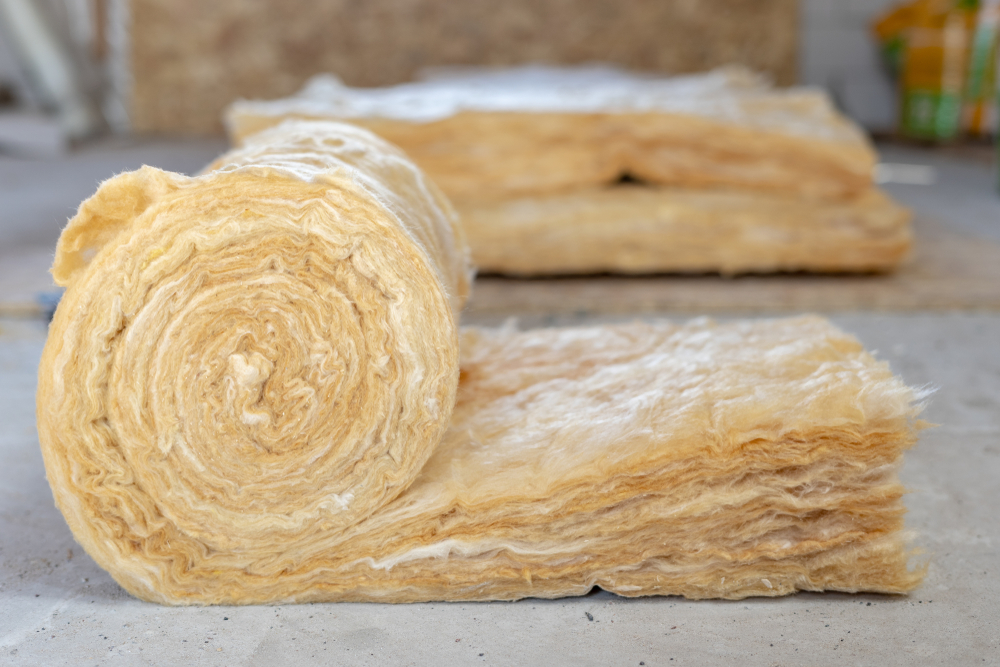When buying an insulation material, you obviously want to determine if it is prone to getting wet or not. After all, the last thing you want to deal with is mold and mildew caused by a damp material.
To understand if mineral wool gets wet or not, you should first be familiar with hydrophobic and hydrophilic materials. Then, you must understand how insulation can get wet and what happens if it does.
The guide below will explain all these concepts. We will also discuss a few other insulation materials you can use in place of mineral wool.
Does Mineral Wool Get Wet?
The short answer is no. Mineral wool is a hydrophobic material, meaning it repels water.
Now, let’s move to the long answer. Mineral wool doesn’t refer to a single type of insulation material. Instead, it comprises three classes:
- Glass Wool: It is made from crushed glass that is spun into a fiber. Manufacturers usually use recycled glass to make glass wool insulation.
- Slag Wool: The majority of mineral wool insulation you find in the US is actually slag wool. It is made by combining blast furnace slag with other ingredients like clay, limestone, and sand.
- Rock Wool: Made of basalt, rock wool is another type of mineral wool insulation. It is frequently used as insulation for high-heat areas.
All the types of mineral wool have hydrophobic properties, due to which they resist moisture. Having said that, mineral wool can get wet if it is exposed to large amounts of water over an extended period.
Such excessive exposure may be due to a clogged gutter or some other water-related issue. If your home floods, the influx of extra water can also soak the mineral wool insulation.
What Happens When Insulation Gets Wet?
Wet insulation poses a few threats to your property. Here’s what you need to know.
Insufficient Insulation
The insulation capacity of a material is determined by its R-value. It is the thermal resistance of the material which tells you how effectively it insulates your home.
For instance, a material with an R-value of 21 will provide better insulation than one with an R-value of 10.
Now, when mineral wool insulation gets wet, its R-value decreases. Why? Because the moisture causes its fibers to compress and lose their air pockets.
When the R-value decreases, the insulation material can no longer repel the heat into the environment. Instead, it starts acting like a conductor. As a result, your home heats up during hot weather and becomes colder in winter. Plus, you’ll see higher utility bills.
Mold Growth
The major concern surrounding wet insulation is poor air quality and mold growth. As the Centers for Disease Control and Prevention (CDC) says, mold can cause serious health problems.
The wet insulation provides a breeding ground for mold spores because moisture in the insulation feeds the spores and encourages their growth. A big problem with mold spores is that they can remain dominant.
Even when you seemingly think you have dried the insulation, the spores might still be in your house. As soon as they find suitable conditions again, they will likely begin growing again.
Besides causing allergic reactions, mold can also result in excessive coughing, wheezing, headaches, and nasal congestion. If you or a family member have asthma, mold can aggravate the condition.
Structural Damage
Wet insulation is also a hazard to your home’s integrity. Remember that insulation is already heavy on its own. When it gets saturated with water, it can become even heavier and start sagging.
That increases the risk of your ceiling, roof, or walls collapsing due to the additional weight.
Signs Your Insulation Is Wet
Whether it’s mineral wool, cellulose, fiberglass, or spray foam, wet insulation can present a range of issues. To keep your home safe and healthy, it’s essential to pay attention to the following warning signs:
- Damp and musty smell around the house
- Brown staining on the wall
- Dips in the floors or ceilings
- Peeling and bubbling wallpaper
- Visible mold growth
All these signs indicate that you need to take swift action.





